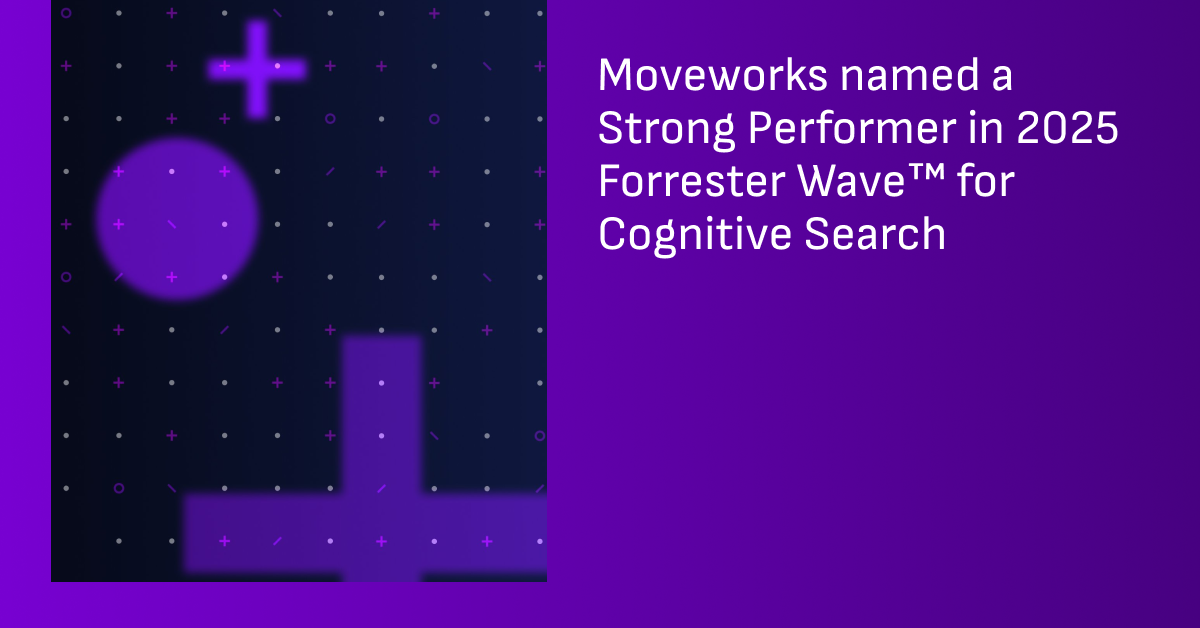Highlights
- Enterprise search boosts productivity but poses security risks. Employees need fast, Google-like access to information, but weak controls can expose sensitive data.
- Permissions are critical for data security. Misconfigured permissions in search could potentially lead to regulatory fines, reputational damage, or a loss of employee trust.
- Key security challenges include managing massive data volumes, enforcing granular permissions, ensuring compliance with regulations (GDPR, HIPAA, etc.), and preventing insider misuse.
- Best practices for secure enterprise search: Implement fine-grained access controls, use encryption for data at rest and in transit, and monitor user activity with audit trails and alerts.
- AI can help to resolve the usability–security tension by managing dynamic, context-aware controls while delivering fast, natural language search experiences to employees.
One employee needs a contract. Another needs a policy. Both type a quick search, expecting Google-like speed.
But behind the scenes, IT leaders feel the tension: misconfigured permissions could expose sensitive information with just a simple search.
This disconnect shows up every day across enterprises. Workers expect search-engine-like experiences that immediately provide the right document, policy, or answer in seconds. But IT leaders know that misconfigured permissions or weak access-control points could expose sensitive data to the wrong people.
When nearly 47% of digital workers struggle to find the information they need to perform their jobs something has to change. But many organizations still struggle to balance fast, friction-free search with the strong security measures they need to protect sensitive data.
The answer? Secure enterprise search solutions that combine advanced search capabilities with robust security and privacy controls.
Enterprise search helps employees find relevant information across company systems and applications—from SharePoint and Slack to Salesforce and intranets—through a single search interface. When done right, it can transform the way teams access knowledge and complete their work, without sacrificing security.
How enterprise search systems work
Enterprise search systems retrieve information in two main ways: indexing and live search. The right approach depends on the source system, its API limitations, and the scale required.
- Indexing: The system "crawls" through every connected data source, extracting content and metadata (like author, date, and file type). This creates an organized index, much like a library catalog, that allows for rapid retrieval of information. For example, platforms like Confluence typically rely on indexing.
- Live search: Instead of relying only on a pre-built index, the system impersonates the user and queries the source system directly at the time of search. This ensures permissions are always current. For example, Slack is supported primarily through live search.
- Hybrid (index + live): Many systems benefit from a combination approach, where indexing improves performance but live queries are also made to enforce real-time permissions. SharePoint is one example where both are used together.
When an employee enters a query, the search engine uses the appropriate method—indexed, live, or both—to return relevant and permissioned results in seconds.
The critical role of security
While a reliable search experience is the goal, security is paramount. Without proper controls, the system can expose sensitive information, violate data privacy regulations, and create new avenues for insider threats.
Key security controls that must be in place include:
- Permissions enforcement: The search system must be deeply integrated with the permissions models of content systems themselves (e.g., Salesforce, SharePoint, Slack, Google Drive). This ensures that a user only sees results for documents they are already authorized to access in the original source. Secondary signals from identity and access management (IAM) systems can also help, but the primary source of truth for permissions comes directly from the connected content systems.
- Data security: Data must be protected at every stage—during ingestion from source systems, while stored in the index, and when it is displayed to the user.
When security goes wrong, the consequences can be severe. An employee searching for "customer contracts" might see confidential documents they are not cleared to view.
A contractor looking for project updates could stumble across financial data meant only for the leadership team. The risk is even higher when you consider the scale involved, as a single misconfiguration could expose terabytes of data across hundreds of applications.
These security failures can lead to significant business losses, including regulatory fines, legal expenses, and a damaged reputation. For example, major data breaches, like those that have affected companies such as Facebook, have resulted in multi-million dollar penalties and lasting reputational damage, underscoring the high stakes of data security.
Enterprise search, by its very nature, centralizes access to all of this data, making robust security a foundational requirement.
Learn how to secure your search systems and empower your workforce while increasing efficiency: Get the detailed guide.
Key security challenges in enterprise search
Putting secure enterprise search in place means navigating some complex technical and operational challenges. Proactively addressing these obstacles can help you plan more effective security strategies.
Scale and complexity of enterprise data
Enterprises generate and store enormous amounts of information. This scale can bog down your infrastructure, slow the deployment of enterprise search, and negatively impact user experience.
An enterprise search system should be able to scale to handle millions of documents, while allowing admins to configure data connectors, search behavior, and business logic to enforce security policies. Building systems that maintain fast search performance while securely processing massive data volumes takes significant technical expertise and resources.
The wide variety of data formats and sources also adds another layer of complexity. Search systems need to be able to handle everything from structured database records to unstructured documents, videos, and chat messages. This requires sophisticated techniques like natural language processing (NLP) to extract meaningful metadata from unstructured content.
Each source and format requires different indexing and security approaches. A critical first step is data discovery, the ability to find and classify all sensitive data across the enterprise landscape. A truly effective system doesn't just return results quickly; it also uses sophisticated ranking algorithms and machine learning to ensure the most relevant results are returned from billions of documents.
Access controls and permissions
Enterprise search needs to enforce permissions at a granular level, allowing employees to only see information they're authorized to access. This requires integrating with content systems (e.g., Salesforce, SharePoint, Slack, Google Drive) and identity systems (e.g., IAM or SSO providers). Depending on the system, this can involve continuous synchronization or live API calls to ensure permissions are always up to date while maintaining fast search performance.
Traditional models like role-based access controls (RBAC) or attribute-based access control (ABAC) can address certain use cases, but they are often too rigid or simplistic for complex enterprises.
A more modern approach is relationship-based access control (ReBAC), which enforces permissions at the record level by modeling the relationships between users, groups, and resources.
ReBAC is particularly well-suited to enterprise search because it reflects how information is actually shared across systems. For example, a project document may be accessible to a specific team, a manager, and an external collaborator—each defined through relationships rather than static roles or attributes. This model enables more dynamic and fine-grained access decisions, ensuring that users only see the data they are explicitly permitted to access.
To strengthen this layer further, search platforms should also support auditing tools, least-privilege access principles, and secure authentication methods such as single sign-on (SSO). Taken together, these controls reduce the risk of misconfigurations or over-permissioning and ensure that search results remain both relevant and secure.
Data privacy and compliance
Organizations operating under privacy regulations face strict requirements for how search systems handle sensitive information. Security and privacy must be protected during data ingestion, storage, and retrieval. This includes:
- Data encryption at rest and in transit
- Detailed audit trails for all access and actions
- Strong compliance policies and protocols
- Data residency options to meet regulatory requirements, often by storing data in specific geographic regions.
Regulatory frameworks like GDPR, CCPA, and HIPAA each impose specific controls over data access, encryption, retention, and user consent. For example, they may require support for DSAR (Data Subject Access Request) workflows, which provide the ability to locate, export, and delete an individual's data upon request.
Compliance also requires comprehensive audit trails. Search systems need to log every query, result, and data access event while maintaining detailed records for regulatory reporting. Indexing sensitive or regulated data presents unique challenges.
Search systems should be able to identify and protect personally identifiable information (PII), financial records, and health data while still making this information discoverable to authorized users. A truly compliant search solution must address all three challenges—scale, access control, and privacy—simultaneously.
How AI enables enterprise search security best practices
AI is a crucial enabler of modern enterprise search security, allowing organizations to balance strict data protection with a seamless user experience. By leveraging machine learning, these systems move beyond basic, rule-based security to a more proactive and adaptive posture.
Implement granular access controls
- An effective search system requires fine-grained permissions that align with your organization's actual access requirements. This goes beyond basic RBAC to include dynamic policies based on project membership, clearance levels, or business context.
- AI-powered identity and access management (IAM) systems can learn from user behavior to automatically apply or recommend these granular permissions, reducing the manual effort of administrators. For instance, AI can analyze a user's role and typical document access patterns to flag users who have accumulated permissions no longer aligned with their current role, a phenomenon known as "privilege creep."
- Maintaining up-to-date access controls is critical as roles and teams evolve. Regular access reviews can help ensure that departing employees lose search permissions and that team changes are reflected in search results in real time.
Use data encryption
- Implement encryption as a baseline protection for any indexed information. This includes both data "at rest" in search databases and data "in transit" between search systems and user devices. Encryption helps reduce risk if your search infrastructure is compromised. Even if attackers gain access to search databases, encrypted data remains protected.
- Leading enterprise search platforms often include encryption by default, but it's important to verify your vendor's specific coverage as features can vary by product and deployment.
Monitor and audit search behavior
- A strong logging functionality can help track all search queries, results accessed, and user behavior patterns. AI elevates this functionality by enabling anomaly detection.
- Instead of simply logging events, AI models can establish a baseline of "normal" user behavior (e.g., search patterns, access times) and then flag deviations that could indicate a security threat.
For example, an AI-powered system can detect unusual activity, such as a user in the marketing department suddenly searching for legal documents, and automatically alert security personnel. This proactive monitoring helps organizations detect suspicious activity and maintain compliance and auditing trails for regulatory requirements.
How AI bridges the gap between usability and security
AI capabilities help resolve the traditional tension between search usability and security controls by enabling systems to understand context better than simple rule-based approaches. This allows for more sophisticated security policies that adapt to specific situations.
For example, AI-powered systems use natural language processing (NLP) to understand the intent and semantic meaning of a query, then apply appropriate security controls. A search for "quarterly financial reports" might trigger additional authentication or approval routing for a user, while a search for "Q3 team budgets" from the same user might only require standard permissions, as AI understands the difference in sensitivity.
AI can also improve the user experience through AI-driven redaction and masking. Instead of blocking an entire document from a user, AI can automatically identify and redact sensitive information (like PII or PHI) within search results.
This allows the user to see the relevant, non-sensitive parts of a document while protecting private data. This creates a seamless experience, where users get the information they need while the system ensures sensitive data remains protected.
Moveworks Enterprise Search exemplifies this approach by combining intelligent search functionality with in-depth security controls. The platform’s agentic AI understands user intent while enforcing granular permissions behind the scenes, delivering fast results without compromising data protection.
Moveworks: Deliver enterprise search employees love without compromising security
Moveworks Enterprise Search gives your employees the exact answers they need, when and where they need it. Our platform is built to deliver a purposeful, accurate, and trustworthy search experience, freeing up your team from time-wasting toil.
It revolutionizes standard Retrieval Augmented Generation (RAG) search with Agentic RAG that combines Agentic AI with RAG, which brings reasoning to search to deliver enhanced quality and accuracy.
For every query, an agentic RAG system performs a few key steps: understanding the user's objective, query enrichment and planning, intelligent retrieval and ranking, and direct and reflected summaries.
This transforms enterprise search with a goal-driven, autonomous decision-making approach to knowledge retrieval.
Moveworks’ security capabilities include:
- Agentic RAG delivers better accuracy and reliability of answers to help drive the ubiquitous adoption of a search solution.
- Citations presence that makes every effort to fact-check for accuracy and link to citations where possible to help to solve for the distortion of information through hallucination.
- Over 100+ connectors that integrate Moveworks Enterprise Search to the most useful information repositories, as well as a way to add connectors to custom content systems.
- Granular permissions and access controls to help ensure the right employees have access to the right information (and nothing more).
By integrating AI with proven security frameworks, Moveworks streamlines search securely across your entire enterprise and greatly accelarates employee information access and productivity.
Explore Moveworks Enterprise Search to learn how leading organizations like yours deliver secure, intelligent search experiences.
enterprise search security guide
While document management systems (DMS) focus on storing and organizing files, enterprise search connects to all of an organization’s data sources, including email, chat, CRM, and intranets, to provide a single, unified search experience. A DMS is a repository, but enterprise search is a universal search layer that accesses data wherever it lives. Because it integrates with multiple systems, it's critical to consider security as you build a unified search experience.
Frequently Asked Questions
Table of contents


